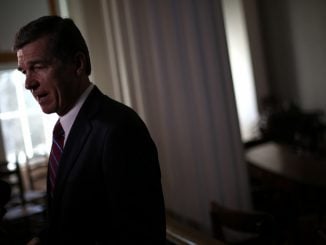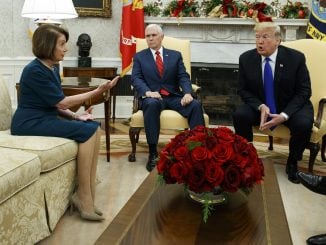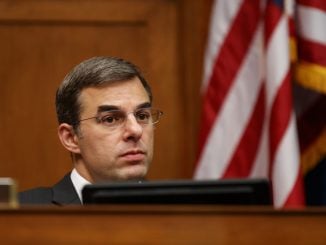A normal year in American politics is often defined by a single story that rises above the rest of the noise to grab the nation’s attention. But 2020 did not have one such story — it had several.
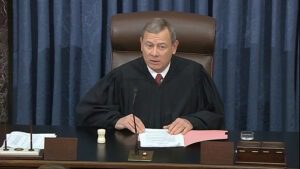
The year began in the middle of an impeachment fight over whether President Donald Trump had improperly abused his power by asking Ukrainian President Volodymyr Zelenskiy to look into Hunter Biden’s dealings with Burisma, a Ukrainian oil company. The Democrats’ first charge was that Trump inappropriately held military aid in the balance over the issue and only wanted it investigated to cause trouble for a political rival. The second charge was that the president impeded this investigation.
While the U.S. House impeached Trump on these two charges (230-197 on the first charge and 229-198 on the second), the Senate, on Feb. 5, acquitted him 52-48 on the first charge and 53-47 on the second. Sen. Mitt Romney (R-Utah) was the only Republican to vote with the Democrats, and only on the first charge. How history will judge the charges will likely rely on further details on Hunter Biden’s lucrative position on the Burisma board, which continue to come out.
Only a month later, the COVID-19 pandemic began in earnest within the United States. This was not just a public health story, but touched every area of American life, including and especially politics. In early March, Trump banned travel from Europe, and by the end of the month, as the virus continued to spread, shutdowns were imposed in many states. The U.S. Congress passed a bipartisan $2 trillion relief package, called the CARES Act, to alleviate some of the economic pain being felt across the country as many places of work were deemed “nonessential.”
The global pandemic has remained a central political issue for the year, with fights over the extent to restrict business, religious worship and

other activities. Now, toward the end of 2020, multiple vaccines have been approved by the FDA and another aid package was brokered by Congress.
While the country was adjusting to living under tightening restrictions, a new defining issue emerged in Minneapolis when a white police officer appeared to have caused the death of a black man, George Floyd, by putting a knee on his neck. This incident, caught on video and viewed by millions, sparked protests and rioting across the country for months. The news site Axios was provided data by the Insurance Information Institute that the damage from the riots would be between $1 billion and $2 billion, the most costly civil unrest in the nation’s history.
The fallout elevated the protest movement known as Black Lives Matter, and soon, the phrase began to appear everywhere — from street murals and athletes’ jerseys to corporate advertising. The resulting racial advocacy was successful in reducing police budgets, removing statues of Confederate generals (and even founding fathers), and the renaming of at least two major league sports teams — the Washington Redskins and Cleveland Indians.
With all this going on throughout the summer and early fall, one of the nation’s most divisive presidential elections in history was also in progress. Trump, labeled by many on the left and in the media as a racist, a Russian stooge and an unstable narcissist, ran against former Vice President Joe Biden, who those on the right largely saw as a corrupt liar and career politician too old to take on the job.
The brutal campaign was defined by moments like a debate that many commentators called the worst in presidential history because the candidates talked over one another and the moderator, Fox News’ Chris Wallace, couldn’t manage to gain control. Even after the votes had seemingly been cast and counted, the nation remained divided, as conservatives, led by Trump, made repeated claims of fraud and irregularities. The Electoral College eventually voted to make Biden the president-elect, but Trump has not yet conceded the race.
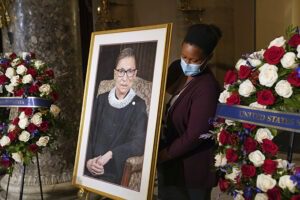
During the height of the campaign — and adding even more fuel to the political fire —progressive icon and Supreme Court Justice Ruth Bader Ginsburg died Sept. 18 at the age of 87. Trump immediately moved to fill the seat despite threats from some Democrats that they’d “pack the courts” with left-wing justices if they gained control in November. The president nominated Amy Coney Barrett, Ginsburg’s philosophical opposite, and she was confirmed Oct. 26. The vote was entirely along partisan lines with the exception of Sen. Susan Collins (R-Maine), who voted against confirming Barrett.
In a typical year of politics, any one of these stories — a highly partisan impeachment battle, the worst pandemic in the country’s history, the costliest race riots America has ever known, an extremely divisive presidential election, or the death of one Supreme Court justice and seating of another — could have carried the news cycle by itself. But 2020 graced journalists with every single one of these stories, simultaneously. All of this leaves many exhausted Americans hoping 2021 is a slow news year.

